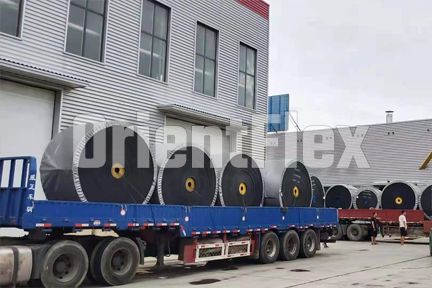- Email orientflex@orientrubber.com
- WhatsApp / Phone+86 180 3186 9514
If caught early and fixed, a mistracked belt does little damage to the conveyor. However, if missed or left unfixed, other types of damage can occur. If a belt is constantly hitting a structure, it can not only damage the structure, but it could shave layers off the belt until there is little left. The width of the belt could also be affected, which reduces the amount of material it can carry.
1. In order to prevent contact with alkaline oils, organic solvents, acids and other substances, the conveyor belt needs to be spaced a certain distance away from the tropical zone to prevent damage due to being too close. If it is to be stored, it must be kept in a cool and dark place or sheltered from rain and snow. .
2. During the storage period, the product should be avoided to be folded. Placed in rolls, etc. During the storage period, the product must be placed in rolls, not folded, and should be turned once in every season of the year.
3. Each conveyor belt has its own specifications and layers and types, so it is not suitable to splice and use at will, and in this case, it is generally recommended that the bonding method is better.
4. The type, structure, specification and number of layers of the conveyor belt should be selected reasonably according to the conditions of use.
5. Use a low speed as much as possible for the running speed of the conveyor belt, especially the use of a fixed plow-type unloading device and the material with large abrasiveness and large lumps should be used as low as possible.
6. The selection of conveyors should also be reasonable, especially the matching of reversing rollers, the relationship between the diameter of the transmission roller and the cloth layer of the conveyor belt, the design requirements of the conveyor roller, and the conveyor groove angle.
7. When the conveyor is running, it should be fed in accordance with the running direction of the belt, and the chute method should be used to reduce the distance of the material falling, in order to reduce the impact of the material on the belt when the material is falling; the belt receiving section should shorten the distance between the rollers and adopt a buffer during operation. The supporting roller and the belt side should adopt a soft and moderate baffle plate to prevent the baffle plate from being too hard to scratch the belt surface of the conveyor belt and causing material leakage.
Orientflex is the conveyor belt product manufacturer, providing product development and engineering with guidance on market requirements for both new product concepts and existing products.
You can contact or visit us in our office from Monday to Friday from 8:00 - 18:00





